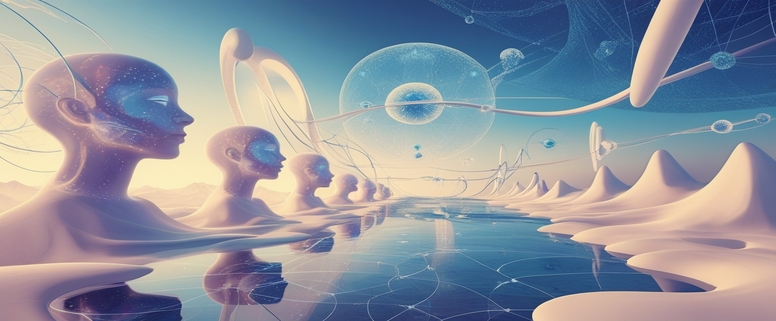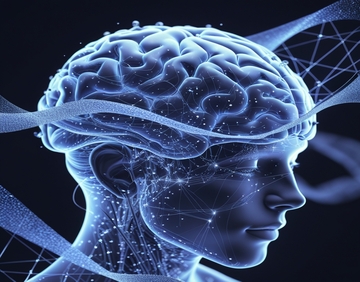Introduction: At the Intersection of Quantum Computing and Consciousness
The fundamental nature of consciousness remains one of humanity's greatest unsolved mysteries. Despite remarkable advances in neuroscience, cognitive psychology, and artificial intelligence, we still lack a comprehensive understanding of how subjective experience emerges from physical processes. Traditional approaches to consciousness have often relied on classical computational metaphors—viewing the brain as a biological computer processing information sequentially, much like a conventional digital device.
But what if consciousness operates more like a quantum system than a classical one? As someone deeply interested in both quantum computing principles and the nature of awareness, I've been exploring fascinating parallels between quantum phenomena and the properties of human consciousness. These parallels suggest a radically different model: consciousness as a quantum-like computation occurring in multiple states simultaneously.
This article explores this perspective, drawing connections between quantum principles like superposition, entanglement, and wave function collapse with features of conscious experience such as multiple simultaneous thoughts, non-local awareness, and the emergence of definite perceptions from fields of possibility. By examining these parallels, we can gain new insights into both consciousness itself and the development of truly intelligent artificial systems.
Quantum Principles and Consciousness
To understand the quantum model of consciousness, we must first examine the fundamental principles that distinguish quantum computing from classical computation:
Quantum Computing Principles
- Superposition: Quantum bits (qubits) can exist in multiple states simultaneously, unlike classical bits that are either 0 or 1
- Entanglement: Particles become correlated in ways that transcend spatial separation, creating instantaneous connections
- Quantum Tunneling: Particles can pass through energy barriers that would be insurmountable in classical physics
- Quantum Coherence: The ability of quantum systems to maintain multiple correlated states
- Wave Function Collapse: Observation transforms multiple potential states into a single definite state
Consciousness Parallels
- Multiple Simultaneous Thoughts: Consciousness maintains numerous potential thoughts, memories, and perceptions at once
- Non-Local Awareness: Consciousness can form connections across seemingly separate concepts and experiences
- Intuitive Leaps: Insights emerge that bypass step-by-step reasoning processes
- Coherent Self-Identity: Diverse mental states remain part of a unified experience
- Attention and Perception: Focusing awareness collapses potential perceptions into definite experiences
These parallels aren't merely metaphorical but may reflect deep structural similarities between quantum processes and consciousness. Several theoretical models, including Orchestrated Objective Reduction (Orch OR) proposed by Penrose and Hameroff, suggest that quantum effects in neural microtubules could generate conscious experience. While these theories remain controversial, recent research has demonstrated quantum effects in biological systems once thought too "warm and wet" to sustain quantum coherence.
My interest in these parallels was sparked by observing similarities between how quantum computers process information and how my own consciousness seems to operate—particularly in states of deep creativity or meditation. In these states, consciousness appears to entertain multiple potential ideas simultaneously, much like a quantum system in superposition, before "collapsing" into a specific thought or insight when attention is focused.
The quantum model offers compelling explanations for aspects of consciousness that classical computational models struggle to address, including:
1. The Binding Problem: How diverse neural processes integrate into unified conscious experiences.
2. Non-Algorithmic Insights: How consciousness generates creative leaps and intuitions that don't follow step-by-step reasoning.
3. The Hard Problem: Why physical processes generate subjective experience at all.

Collective Consciousness as Base Software
Extending the quantum computing metaphor further, we can conceptualize individual consciousnesses as independent programs running on shared "base software"—what we might call collective consciousness. This perspective aligns with both quantum field theories and ancient philosophical traditions suggesting an underlying unity to conscious experience.
In computational terms, we can understand this relationship through several key concepts:
The Computational Hierarchy of Consciousness
-
Base Layer: Fundamental Fields
At the deepest level, consciousness may arise from fundamental quantum fields that pervade the universe. These fields represent the "operating system" upon which all individual consciousnesses run, providing basic properties like awareness, information processing, and potentiality.
-
Middle Layer: Shared Libraries and Patterns
Built upon the base layer are shared "libraries" of consciousness—archetypal patterns, collective memories, and fundamental cognitive structures that all conscious entities access. These correspond to shared subroutines in software development—common algorithmic patterns that individual programs can utilize.
-
Interface Layer: Individual Consciousness
At the surface level, individual consciousness emerges as a unique "instance" or "application" running on the shared infrastructure below. Each instance has distinct parameters, memories, and processing patterns while still utilizing the shared libraries and operating on the same fundamental base.
This model suggests that what we experience as individual consciousness is actually a localized expression of a more fundamental phenomenon—like waves on the surface of a vast ocean. Each wave appears distinct, yet all are manifestations of the same underlying water.
The computational metaphor helps explain several puzzling aspects of conscious experience:
Shared Intuitions: Certain fundamental insights and understandings appear across cultures and individuals without direct transmission, suggesting access to shared "knowledge libraries."
Transpersonal Experiences: In altered states of consciousness, individuals often report experiences that transcend personal boundaries—sensations of connection with other consciousnesses or with a universal awareness.
Emergent Similarities: Despite different neural architectures, conscious beings develop remarkably similar cognitive patterns and structures, suggesting common underlying organizational principles.
Collective Cognitive Fields: Ideas often emerge simultaneously across different locations without direct communication, suggesting a shared substructure of thought (what Jung called the collective unconscious).
Personal Observations and Experiences
My exploration of quantum consciousness isn't purely theoretical—it's informed by direct personal experiences that suggest consciousness operates in ways that transcend classical physics.
During experiences with deep meditation and carefully controlled experiments with substances like DMT and LSD, I've observed phenomena that parallel quantum processes. Under LSD, for example, I maintained complete awareness without typical psychedelic hallucinations, but noticed a distinct flickering in my arm movement—as if it existed in multiple positions simultaneously before "collapsing" into a definite state, reminiscent of quantum superposition and wave function collapse.
Similarly, I've experienced moments where awareness seemed to extend beyond the confines of individual consciousness—accessing information or insights without clear causal pathways, similar to quantum entanglement's non-local connections.
After emerging from a coma following an accident, I experienced a profound shift in my perception of reality. My memories seemed to belong to someone else, as if my consciousness had somehow realigned with a slightly different version of reality—analogous to a quantum transition between states.
These experiences, while subjective, have led me to question whether consciousness might operate according to principles closer to quantum computation than classical processing. They suggest that what we experience as individual consciousness may be more fluid, interconnected, and multi-state than conventional models allow for.
I've also noticed that consciousness operates differently at different speeds. When thinking or moving rapidly, my awareness becomes more focused and expansive simultaneously—similar to how quantum computation can process multiple possibilities at once. This has practical implications: I can maintain broader awareness while focusing on specific tasks when operating at higher cognitive speeds.






